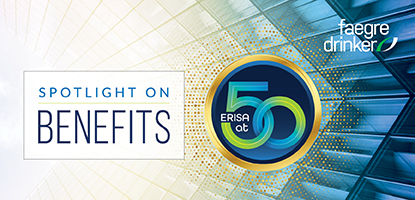Hardship Distributions During the COVID-19 Outbreak
As the COVID-19 outbreak continues, retirement plan sponsors will likely receive questions from employees about ways in which they can access funds in their retirement plan accounts. While we wait for any potential Congressional action to ease access to retirement plan accounts, we look to the hardship distribution rules that apply now regardless of Congressional relief. Hardship distributions are one way an employee can receive an in-service distribution of elective deferral contributions (and, depending on the plan provisions, other types of contributions) from their accounts, provided the employee has an immediate and heavy financial need and the distribution is necessary to meet that need.
The IRS’s recently issued final regulations added a new type of safe harbor hardship distribution event, for losses related to a federally-declared disaster. Under the final regulations, an employee may be deemed to have an immediate and heavy financial need when the employee incurs expenses and losses (including loss of income) as a result of a disaster declared by the Federal Emergency Management Agency (“FEMA”), provided the employee’s principal residence or principal place of employment at the time of the disaster was located in an area designated by FEMA for individual assistance with respect to the particular disaster. Historically, the IRS announced similar relief on a piecemeal basis (for example, allowing certain hardship distributions for Hurricane Maria and the California wildfires in 2017).
However, to date, COVID-19 is not (yet) a federally-declared disaster across the entire United States such that it would enable participants to request hardship distributions on that basis. President Trump has not yet declared COVID-19 to be a “major disaster” for the entire United States under Section 401 of the Stafford Act, although in his March 13 letter, the President took the initial step of declaring COVID-19 to be an “emergency” under Section 501 of the Stafford Act. As of March 21, 2020, California, New York, and Washington state have each been declared a “major disaster” under the provision and arguably have a different result than the rest of the United States.
We understand that various industry groups are aware of this issue and are lobbying both Congress and the administrative agencies for changes to the relevant guidance. Until such guidance is issued, hardship distributions may still be available for participants on other bases, such as for unexpected medical expenses and for payments necessary to prevent eviction from, or foreclosure on, a participant’s principal residence. In addition, given the disaster declaration for California, New York, and Washington state, hardship distributions for expenses and losses on account of COVID-19 could be deemed to be due to an immediate and heavy financial need if a plan adopted the new safe harbor distribution event for federally-declared disasters.
Finally, note that the new hardship distribution event for federally declared-disasters was optional and was not a required plan design change. As a result, plan sponsors may wish to review their plan documents now to decide whether to add this distribution option, in the event that guidance is subsequently issued to allow hardship distributions for certain COVID-19-related expenses and losses across the United States.
The material contained in this communication is informational, general in nature and does not constitute legal advice. The material contained in this communication should not be relied upon or used without consulting a lawyer to consider your specific circumstances. This communication was published on the date specified and may not include any changes in the topics, laws, rules or regulations covered. Receipt of this communication does not establish an attorney-client relationship. In some jurisdictions, this communication may be considered attorney advertising.

